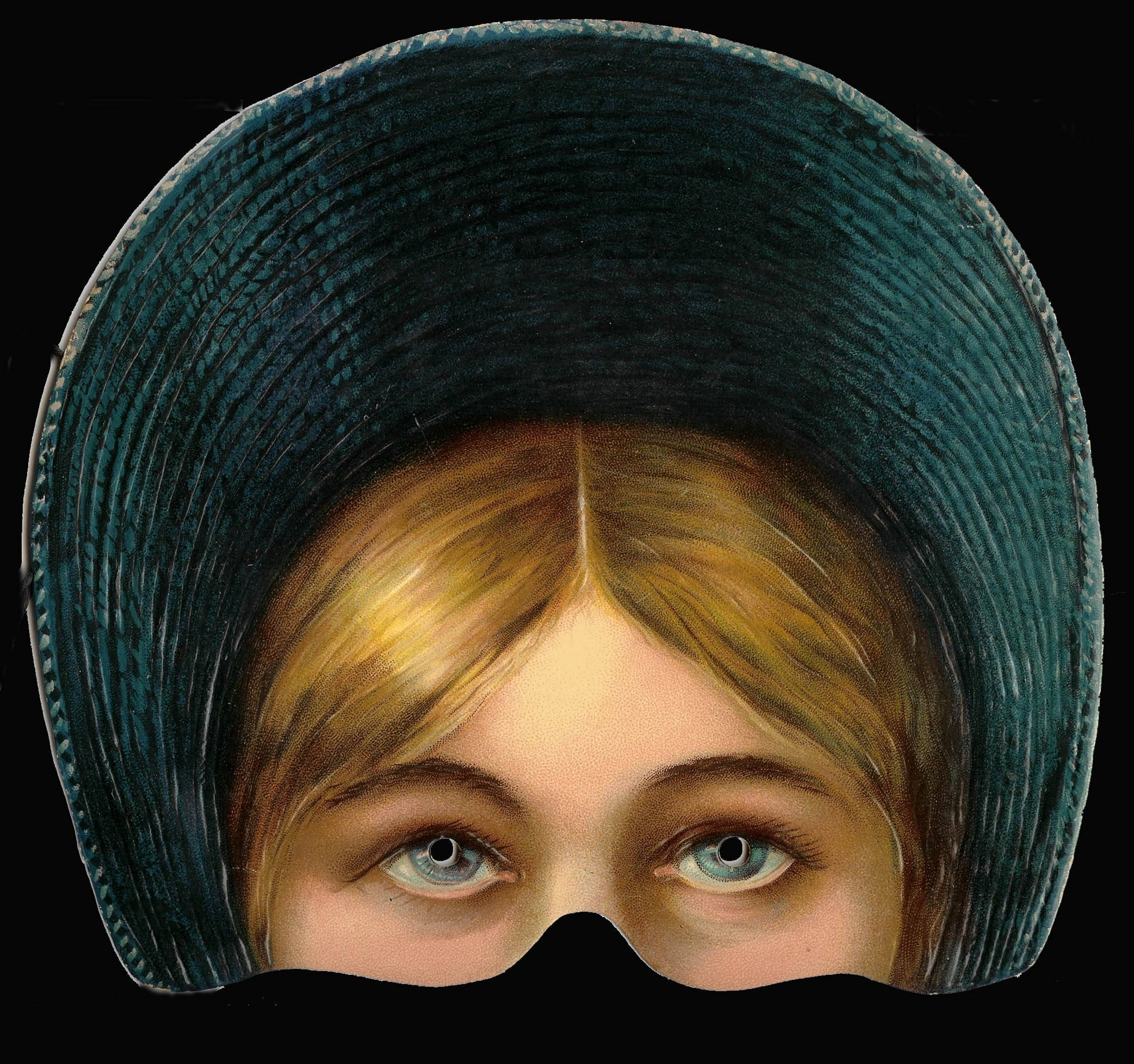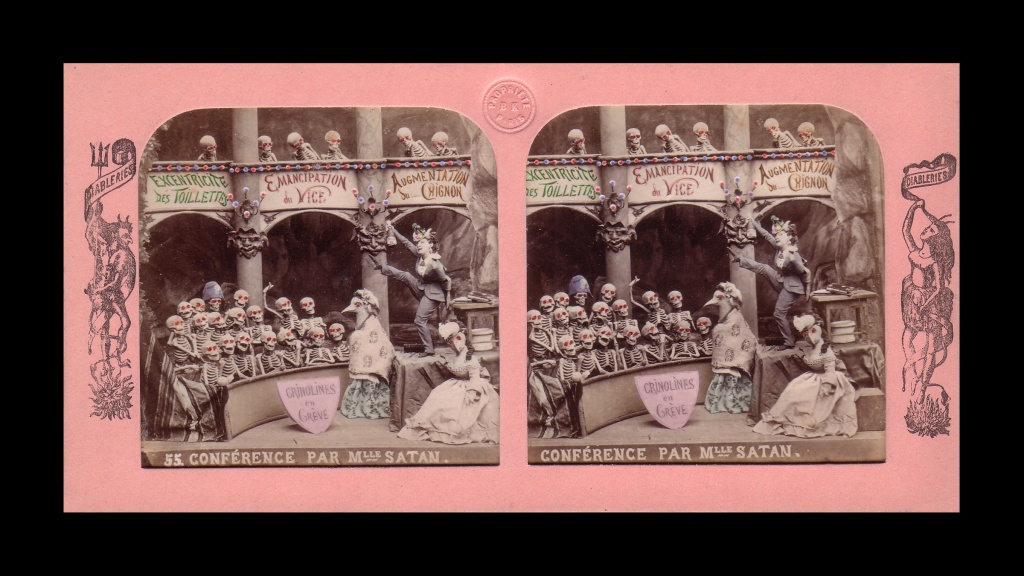
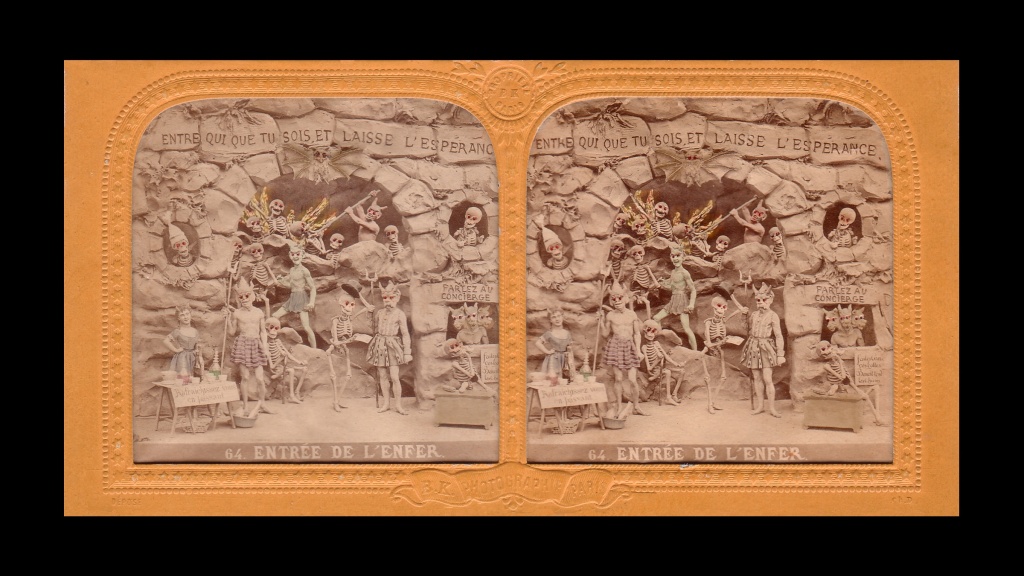
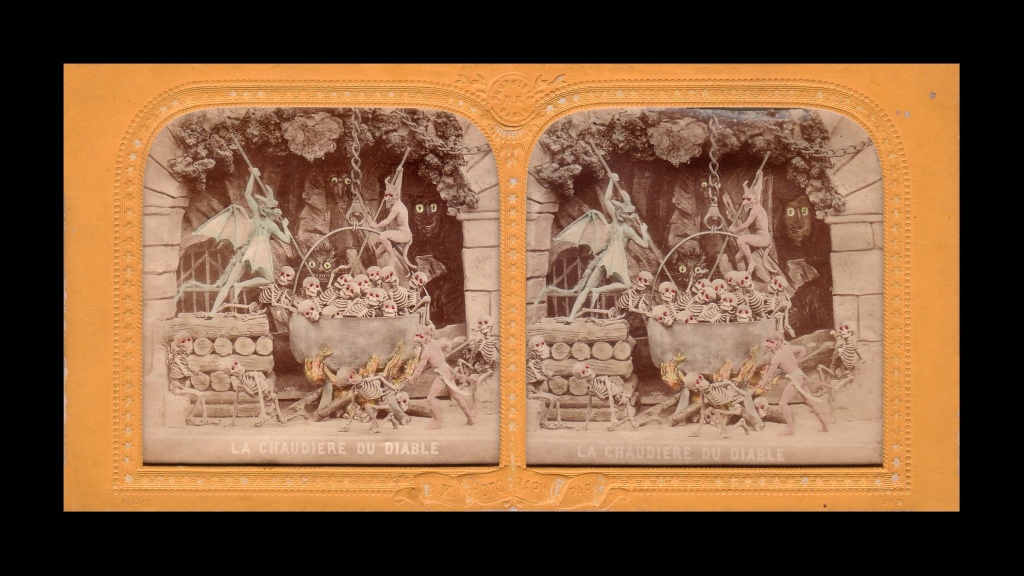

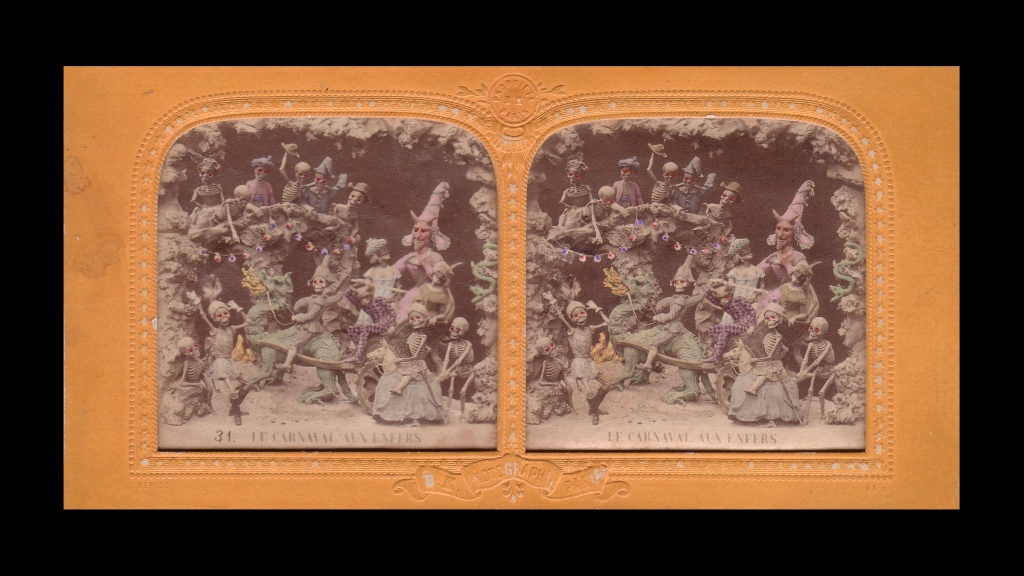
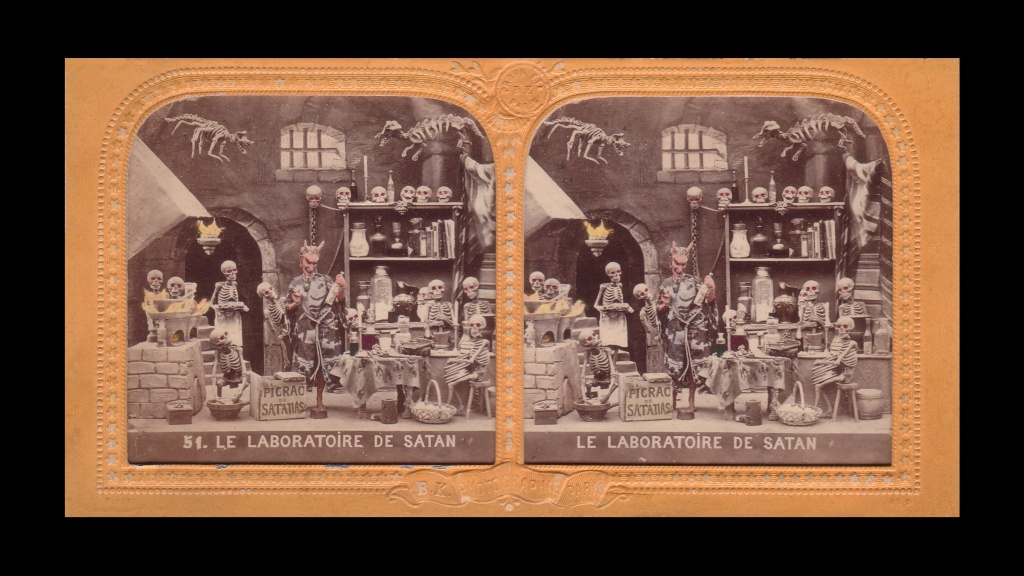

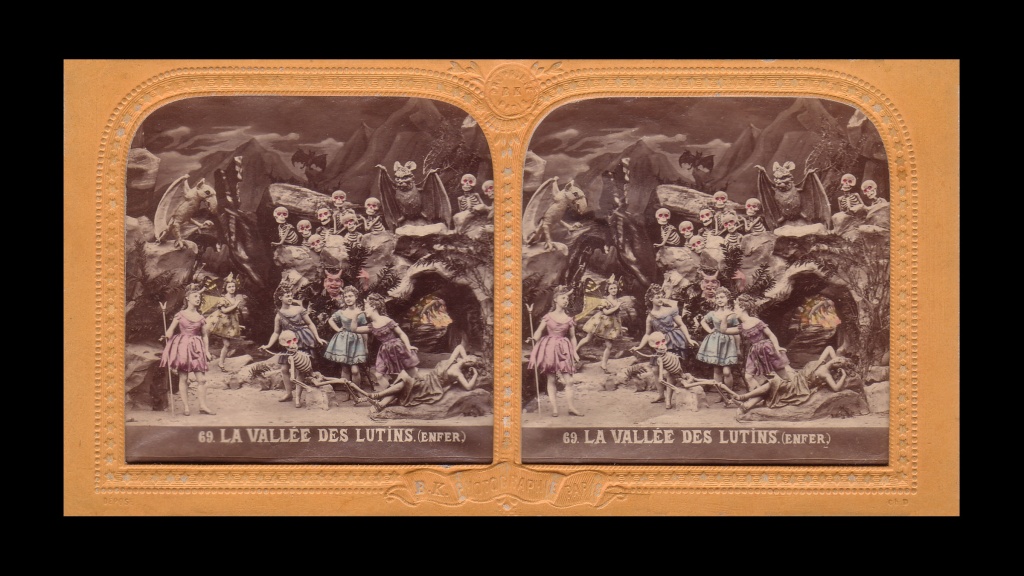
With Halloween coming up I was reminded of a series of devilish photographs that I researched and wrote about years ago called Les Diableries. They were created in France in the mid-19th century and they depict various scenes of life in Hell. Not only that but these images are “stereoscopic” meaning when you look at them with special lenses they appear in 3D! I got to be one of the first people to publish a modern detailed history of these images and the artists who created them, and I also wrote the Wikipedia entry for them. A couple of years after my publication another group of researchers, including Brian May (astrophysicist and lead guitarist for the rock band Queen), published their own book on the series.
Les Diableries: 3D Visions of Hell – A History


